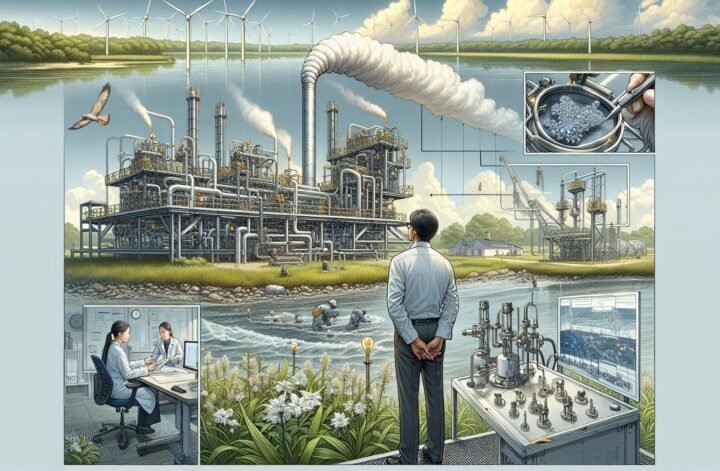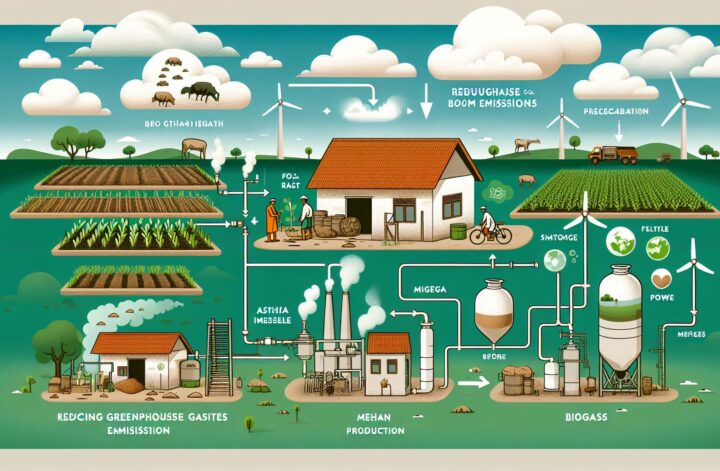Among the myriad methods humans have devised to harness the power of our planet, biogas production stands as a beacon of sustainability and ecological concern. An upshot of advancing technology and increasing awareness regarding our planet’s health, biogas production speaks volumes about our abilities to turn waste into wonders. This article aims to delve deep into the world of biogas production, its core components, mechanisms and benefits that make it a crucial component in the race towards renewable energy.
What Is Biogas?
Biogas refers to a blend of different gases produced via the process of anaerobic digestion or the fermentation of organic materials under certain environmental conditions. Also known as swamp gas, landfill gas, and digester gas, its main constituents are methane and carbon dioxide, with traces of some other components. Its robust calorific value and ease of usage make biogas a pivotal player in renewable energy sources[^1^].
The Production of Biogas
The biogas production process leans heavily on anaerobic digestion, a sequence of biological processes that disintegrates organic material in the absence of oxygen. Essentially, it follows the same principles that guide the natural decomposition process. However, in this case, we control the environment to streamline the conversion of organic waste into valuable biogas and digestate.
The process transpires through four cardinal steps: Hydrolysis, Acidogenesis, Acetogenesis, and Methanogenesis[^2^].
- Hydrolysis: The initial step wherein complex organic materials—like lipids, carbs, and proteins—are broken down into simpler sugar, amino acid, and fatty acid chains.
- Acidogenesis: The subsequent phase where these simpler compounds are converted into volatile fatty acids, ammonia, carbon dioxide, hydrogen, and others.
- Acetogenesis: Here, the byproducts of acidogenesis are turned into acetates, carbon dioxide, and hydrogen.
- Methanogenesis: The final step wherein certain microorganisms, called methanogens, oxidize the products of acetogenesis into methane and carbon dioxide[^3^].
Types of Digesters and Digestion
Biogas production usually happens within a specific structure known as a digester, where organic matter is stored during the process of anaerobic digestion. Based on the environmental conditions, these digestions are broadly categorized into two types: Mesophilic and Thermophilic.
Mesophilic digestion usually occurs within a temperature range of 20°C to 40°C and takes a much longer period. Conversely, thermophilic digestion happens between 45°C to 60°C, making the digestion process more rapid but also more sensitive to changes in conditions[^4^].
Benefits of Biogas Production
The most apparent benefit of biogas production lies in its status as a renewable energy source due to its primary ingredient being waste material. The organic waste that would otherwise end up in landfills gets converted into energy and valuable byproducts. Additionally, biogas production also lowers methane emissions, a potent greenhouse gas, thus reducing our carbon footprint and combatting climate change.
The digestate obtained from biogas production, rich in nutrients, can be utilized as a biofertilizer, thus forming a closed loop of waste utilization. From households to industrial scale, biogas systems add value in reducing energy dependency and contributing to a sustainable future[^5^].
Looking Forward
Biogas ushers in a golden opportunity to reduce dependency on conventional energy sources while mitigating environmental concerns. Its potential to convert waste into energy not only echoes influentially about our endeavors towards recycling but also offers a promising solution to the ever-looming energy crisis. By gravitating towards sustainable practices like biogas production, we take a significant step forwards towards a cleaner, greener, and sustainable future.
[^1^]: (Scientific, American., 2016, Biogas: Converting waste into energy)
[^2^]: (Arthur, Wellinger, & Murphy, 2016, The Biogas Handbook)
[^3^]: (Electricity, 2019, How does anaerobic digestion work)
[^4^]: (Appels, 2011, Advanced Anaerobic Digestion: Volatile Fatty Acid)
[^5^]: (Angelidaki, 2013, Sustainable Biogas Production in Municipal Wastewater Treatment Plants)




